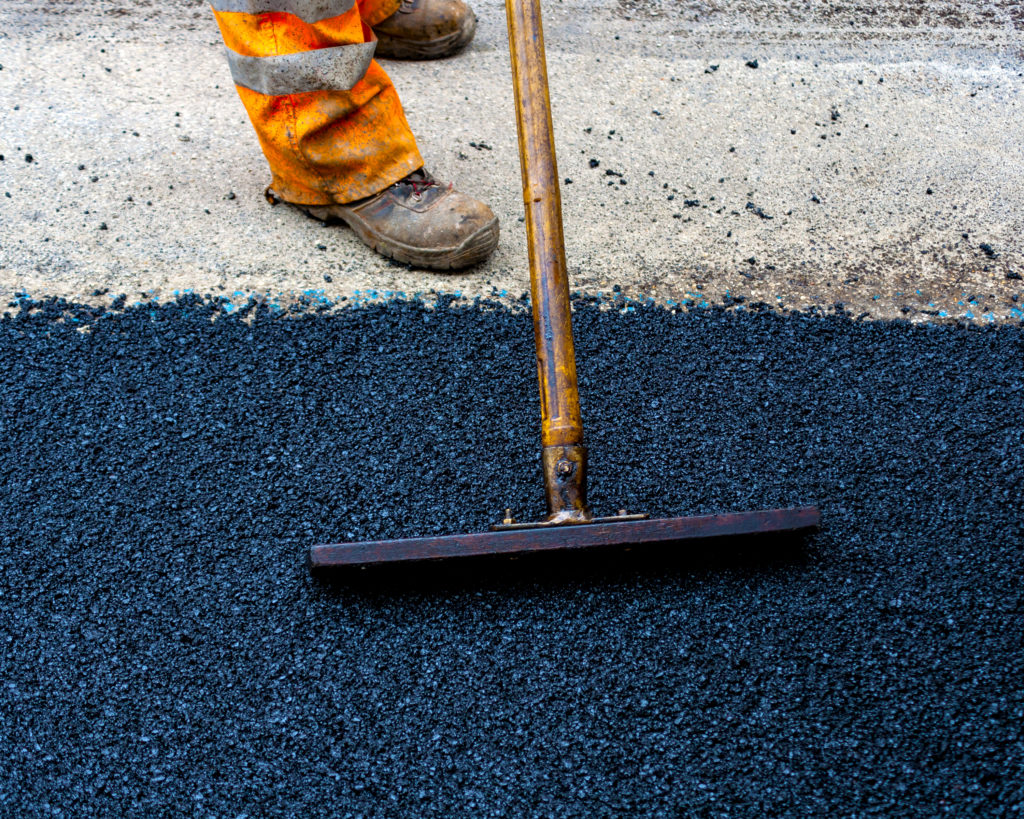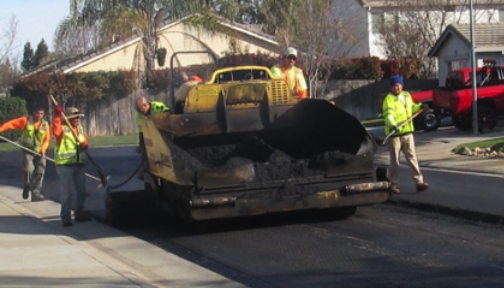Transform Your Property's Landscape with Hot Mix Asphalt Paving Quality
Transform Your Property's Landscape with Hot Mix Asphalt Paving Quality
Blog Article
Opening the Tricks of Warm Mix Asphalt Innovation
Discovering the depths of hot mix asphalt technology reveals a world where accurate formulations and thorough procedures merge to form our roads and framework. The fusion of binders, aggregates, and fillers isn't merely a building and construction job yet a calculated orchestration of durability and effectiveness.
Relevance of Warm Mix Asphalt
Warm Mix Asphalt plays a critical function in contemporary framework development due to its resilience and cost-effectiveness. As one of the most typically used leading product for roadways, highways, and parking area, Warm Mix Asphalt uses a variety of advantages that add to its value in construction jobs. One essential advantage is its capacity to withstand rush hour lots and severe weather condition problems, giving a lasting and reputable surface area for transportation networks. Furthermore, Warm Mix Asphalt is cost-efficient in both first building and construction and long-term maintenance, making it a favored choice for many framework tasks.
The sturdiness of Warm Mix Asphalt stems from its structure, which consists of aggregates, binder, and filler products that are meticulously chosen and mixed to fulfill certain efficiency demands. Generally, the relevance of Hot Mix Asphalt in infrastructure advancement can not be understated, as it proceeds to be a cornerstone of modern-day construction methods.
Parts of Asphalt Mixes
The composition of asphalt blends contains meticulously selected aggregates, binder, and filler materials that are critical for achieving certain performance requirements. Accumulations are the main part of asphalt mixes, supplying toughness and stability. These aggregates can be natural, such as gravel or crushed stone, or artificial, like recycled products from old sidewalks. The binder, generally asphalt or asphalt concrete, holds the accumulations with each other and provides versatility and durability to the mix. The choice of the binder is crucial as it directly affects the mix's efficiency in various climate problems. Fillers, such as hydrated lime or Portland concrete, are made use of to improve the mix's workability and aging resistance. Angled Parking.
The mix and proportion of these elements play a substantial duty in figuring out the quality and efficiency of the asphalt mix. Designers carefully develop the mix to meet particular requirements, taking into consideration factors like traffic volume, climate conditions, and sidewalk lifespan. Appropriate selection and balancing of aggregates, binder, and fillers are essential for developing sturdy, long-lasting asphalt sidewalks.
Combining and Manufacturing Techniques

When the accumulations are picked, the binder, frequently asphalt cement, is added to bind the products together. The binder's quality and amount considerably affect the mix's flexibility, resistance, and toughness to environmental elements. In addition, fillers like hydrated lime or Rose city cement may be incorporated to enhance particular characteristics of the asphalt mix, such as its workability or wetness resistance.
Throughout production, the accumulations and binder are heated up, typically between 250-325 ° F(121-163 ° C ), to facilitate mixing and ensure appropriate finishing of the accumulations. The blending process needs to be detailed to attain a homogeneous mixture that advertises the preferred efficiency characteristics of the asphalt. Numerous strategies, such as set mixing or drum mixing, are employed to achieve constant and top notch asphalt mixes for building and construction projects.
Variables Affecting Asphalt Efficiency
Elements affecting asphalt efficiency encompass an array of variables that influence the Resources durability, longevity, and overall quality of asphalt sidewalks. One essential element is the high quality of materials made use of in the asphalt mix. The type and resource of accumulations, the binder high quality, and the additives all play a considerable function in determining the performance of the asphalt pavement. The rank of accumulations is crucial as it impacts the mix's security, resistance, and workability to rutting and cracking.

Design considerations, such as pavement density and drainage, are vital in ensuring the long-term performance of the asphalt pavement. By very carefully taking into consideration these engineers, elements and specialists can optimize asphalt performance and improve the solution life of pavements.
Sustainable Practices in Asphalt Technology

WMA enables for the manufacturing and placement of asphalt mixes at reduced temperatures compared to typical hot-mix asphalt, resulting in reduced energy intake and greenhouse gas emissions. The usage of permeable asphalt blends can assist minimize stormwater runoff concerns by permitting water to infiltrate with the sidewalk and into the ground, advertising all-natural water filtration and recharge processes.
Verdict
To conclude, warm mix asphalt technology plays a vital function in modern infrastructure growth due to its resilience and cost-effectiveness. By thoroughly stabilizing parts, utilizing appropriate mixing strategies, and considering numerous aspects, engineers can view publisher site develop high-grade asphalt mixes that withstand hefty website traffic tons and severe weather. Embracing sustainable techniques, such as making use of warm-mix modern technologies and recycled products, further enhances the ecological kindness of asphalt modern technology.
Mixing and manufacturing methods in warm mix asphalt modern technology entail the specific mix and handling of accumulations, binder, and fillers to create a high-performance and resilient asphalt mix.Aspects affecting asphalt efficiency see here incorporate a range of variables that impact the longevity, long life, and general high quality of asphalt pavements. Sustainable practices in asphalt modern technology include different efforts intended at lowering the ecological impact of asphalt manufacturing and paving procedures. By integrating reclaimed asphalt sidewalk (RAP) and recycled asphalt tiles (RAS) into new asphalt mixes, the industry can significantly minimize the consumption of raw products and energy, while also reducing landfill waste.
WMA allows for the manufacturing and positioning of asphalt blends at lower temperatures contrasted to conventional hot-mix asphalt, resulting in lowered power consumption and greenhouse gas exhausts.
Report this page